Click Here for the recipe.
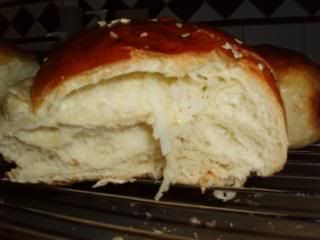
The results were terrific! They tasted like bakery bread. They were really soft and fluffy, especially right out of the oven. Even after a night, they were still pretty soft, all because of the tangzhong. I would still recommend rebaking the bread before serving because it will become soft again, even after sitting out for a couple days.
I had a really hard time kneading the dough. I made this recipe two times to use up the tangzhong and it was easier the second time, but the first time kneading the dough was really, really hard. It took me a whole hour just to knead the dough by hand before I could proof it. I have a suspicion that this was caused by me unknowingly adding too much tangzhong to the dough at the beginning. I was very worried about the result because even after kneading the dough for one hour, it was way too sticky. I had no choice but to add a few more tablespoons of flour until it was more workable. It was still sticky afterward, but I didn't want to make the bread too tough, just in case. Anyway, from then on, every went pretty smoothly. The bread turned out fantastically and my whole family enjoyed eating it.
Here's what I did.
Since I had to knead the dough by hand and since I only had active yeast, I tried to use my past bread experiences to make this bread.
I whisked the bread flour and sugar together, I set aside around 1 tbsp of sugar though. After I whisked those two ingredients together to evenly distribute them, I dissolved the 1 tbsp of sugar that I had set aside in warm milk and then added a whole envelope of active dry yeast.
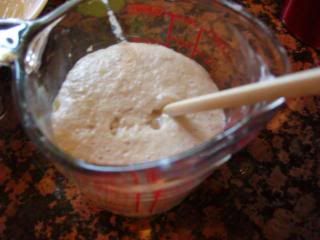
I left it there for around ten minutes and it became really bubbly and thick.
While I was waiting, I mixed the amount of tangzhong the recipe called for with an egg.
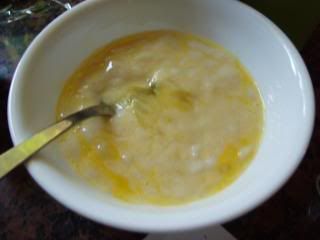
I started adding the wet ingredients into the hill of dry ingredients. I stirred it until it formed a dough. It is pretty sticky then.
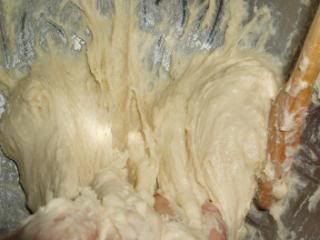
I started kneading it and it became a bit easier to knead as the gluten started forming, however, the dough was way too sticky still so I had to add a few more tablespoons of flour until it was better.
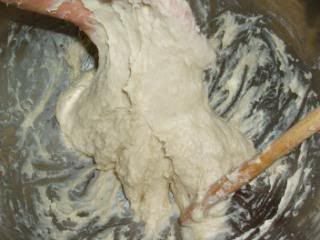

This was how sticky it was.
Then, I let it rise for one hour after giving up. I had already kneaded it by hand for one hour and the dough was still overly sticky. I didn't bother oiling the bowl.
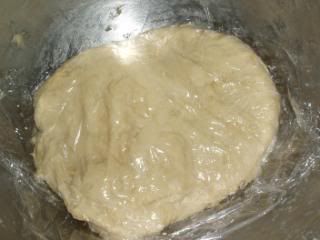
After one hour it looked pretty successful.

I started making the filling by creaming the sugar and butter, mixing in the egg, and then adding the coconut.
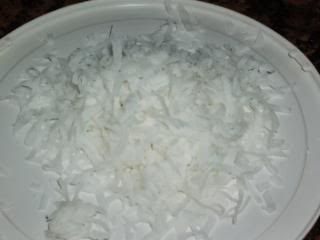
The coconut smelled really, really nice.
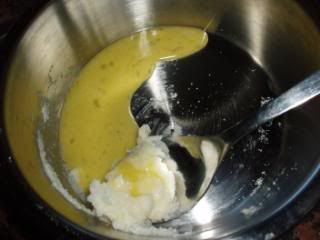
Sugar, butter and egg.
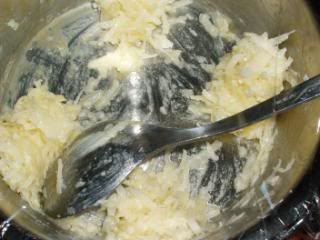
I divided the filling into four instead of six because not everyone in my family likes coconut.
Now, I portioned out the dough into 6 balls, let them rest for 15 minutes and then rolled them out into ovals.
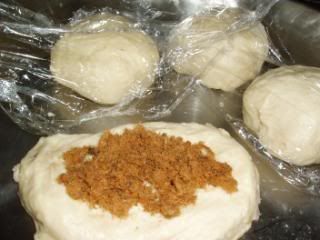
I filled them with pork sung, aka rou song or pork floss, red bean paste or a coconut filling.
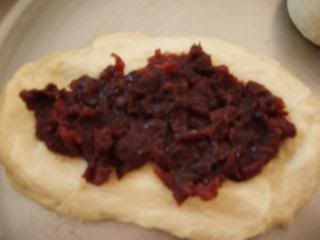
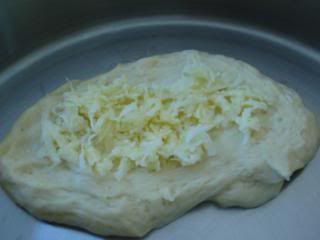
Then I rolled them up from top to bottom. (Refer to Christine's Recipes for better understanding.)
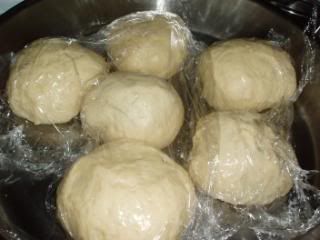
Cover buns with saran wrap and let it rise for one more hour or double in size.
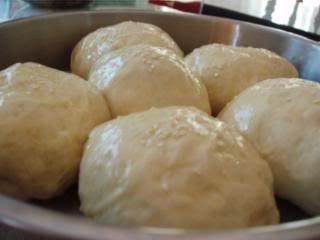
After doubled in size, brush with egg wash and sprinkle sesame seeds. Bake in the preheated oven. After they are done baking, remove from the pan and cool on wire racks. They are freezable if you want to keep them for a long time.
Red bean filled bun.

Coconut filled bun.
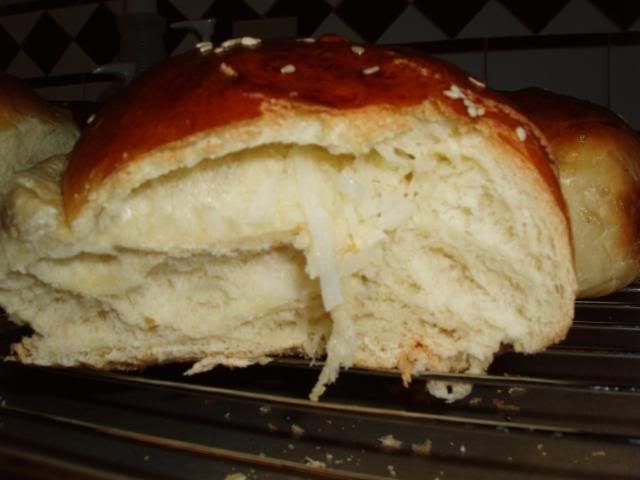
Texture
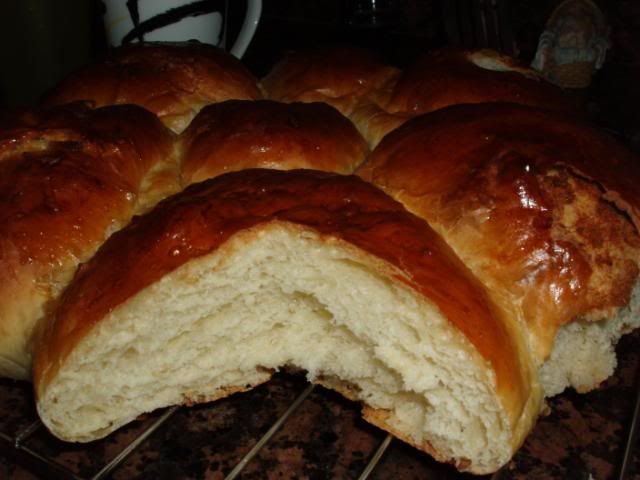
My brother's hand.
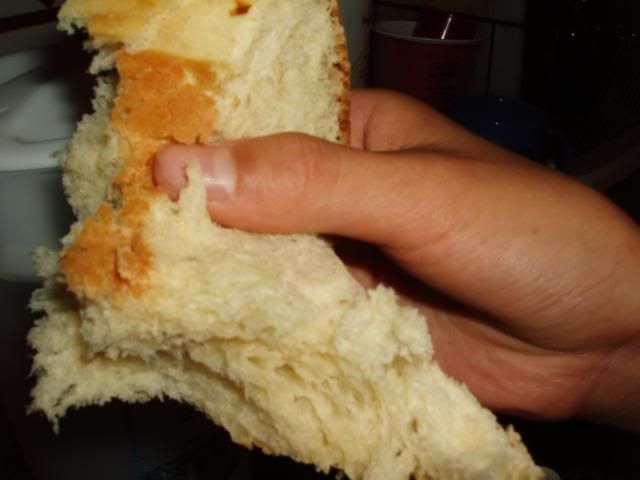
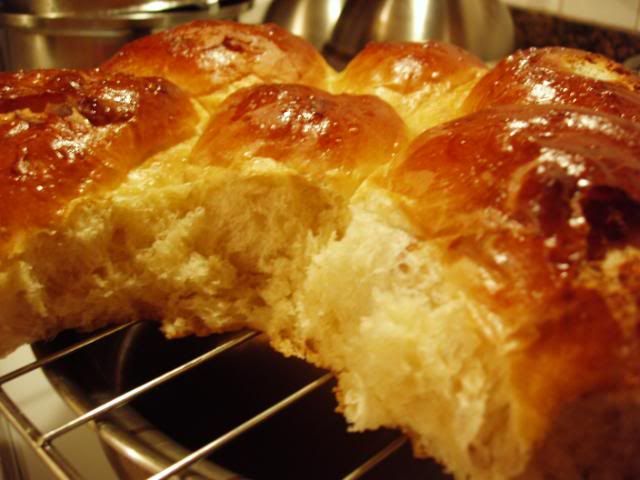

Aw, I can see your bread was really, really soft and fluffy from your pictures. Well done.
ReplyDeleteI'm glad that you and your family liked this recipe.
Indeed, it's very hard to knead the dough with tangzhong. That's why I often use a breadmaker take the hard job for me, esp. for making this kind of bread. ^0^
Thank you! I will be using this recipe again and again. It really is a keeper. :)
ReplyDeletewow you sure like baking bread! kudos! i have only tried yeast baking around three times, the process takes long and the worst part is the proofing period since i want to bake it straight away!
ReplyDeleteHi Grub, it gets better as you bake more bread. I love finding out how the texture of the bread will turn out to be, but I have a tendency to over bake things = crispy crust.
ReplyDeleteI like your blog. It is very informative and involves a lot hard work to capture those pictures. I am certain the baking communities can learn some baking skill from you blog. I baked a batch of custard bun last weekend. I didn’t pipe the custard on top of the bun. I used the custard as filling. I baked the bun using the silicone mould. http://www.bakingfrenzy.com/silicone-flower-muffin-mould-p-346.html.
ReplyDeleteI have some left over cookie crumbles in the freezer, I sprinkled it on top of the bun for decoration.
sokeleng, Thanks, you're too kind. It's actually quite easy to take pictures of the steps. :) I still have tons more to learn, but thanks. And yum, the custard buns sounds good.
ReplyDelete